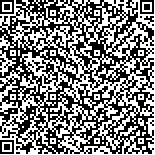本文已被:浏览 756次 下载 1480次
Received:May 27, 2020 Revised:June 23, 2020
Received:May 27, 2020 Revised:June 23, 2020
中文摘要: 针对COVID-19这一特殊时期, 利用大数据技术, 处理原始不同数据结构的电力数据. 将用户用电行为的数据分成内部数据和外部数据, 其次是确定用电行为分析, 通过对传统的K-means聚类算法改进, 提高K-means效率. 最后利用改进算法聚类出的类别构建用电行为模型, 实现用户用电行为分析. 最终实现达到帮助国家电网公司达到电力智能分配的目的, 并且给出了大致的政策倾向. 提升国家各部门监管能力, 助力国家应急管理.
Abstract:Aiming at special situation under COVID-19 epidemic environment, big data technology is used to process the power data of different data structures at the very beginning. Firstly, the data of users’ electrical behavior is divided into internal data and external data. Secondly, the behavior of electricity consumption is analyzed by improving K-means clustering algorithm, which can improve the efficiency of the traditional K-means algorithm. Finally, the improved K-means algorithm clustering is used to build the power consumption behavior model, so as to realize the results of the users’ power consumption behavior analysis model. This study helps the state grid corporation of China to achieve the purpose of intelligent distribution of electricity, and gives the general policy tendency, which improves the regulatory capacity of all government departments to help manage national emergencies.
keywords: K-means curve matching COVID-19 epidemic environment electricity consumption behavior clustering algorithm
文章编号: 中图分类号: 文献标志码:
基金项目:
引用文本:
关旭,王紫瑞,冀雯馨,郭一民.COVID-19疫情环境下用电行为分析.计算机系统应用,2021,30(1):282-287
GUAN Xu,WANG Zi-Rui,JI Wen-Xin,GUO Yi-Min.Analysis of Electricity Consumption Behavior under COVID-19.COMPUTER SYSTEMS APPLICATIONS,2021,30(1):282-287
关旭,王紫瑞,冀雯馨,郭一民.COVID-19疫情环境下用电行为分析.计算机系统应用,2021,30(1):282-287
GUAN Xu,WANG Zi-Rui,JI Wen-Xin,GUO Yi-Min.Analysis of Electricity Consumption Behavior under COVID-19.COMPUTER SYSTEMS APPLICATIONS,2021,30(1):282-287


